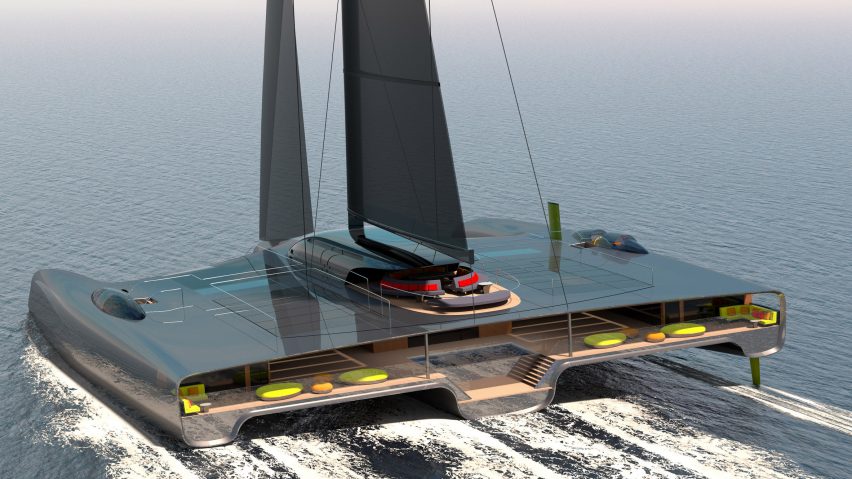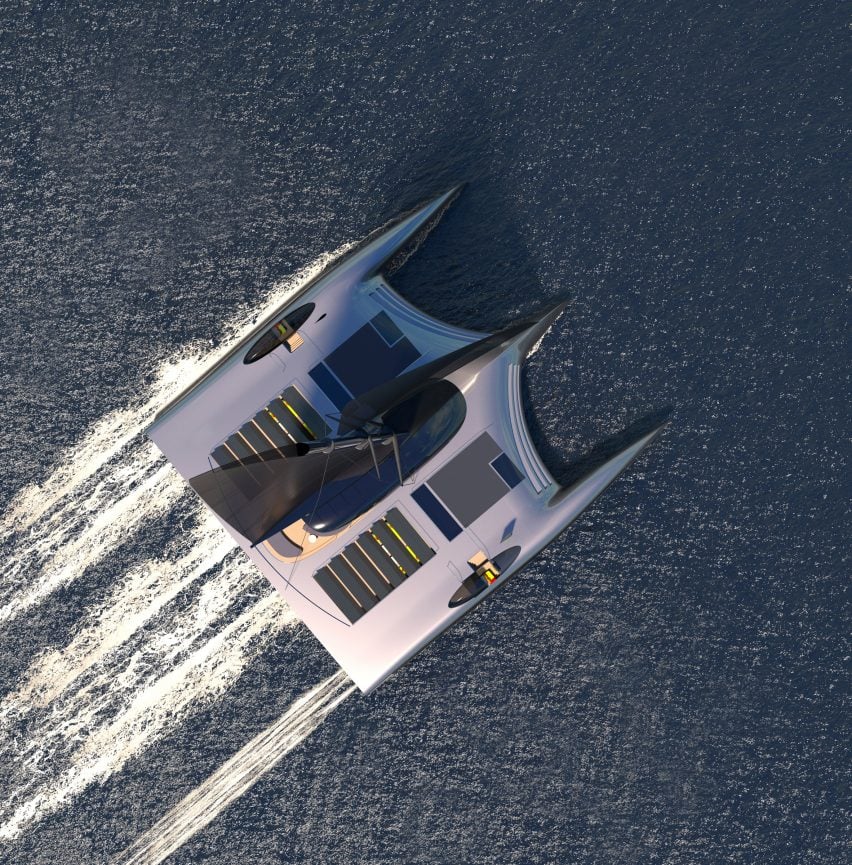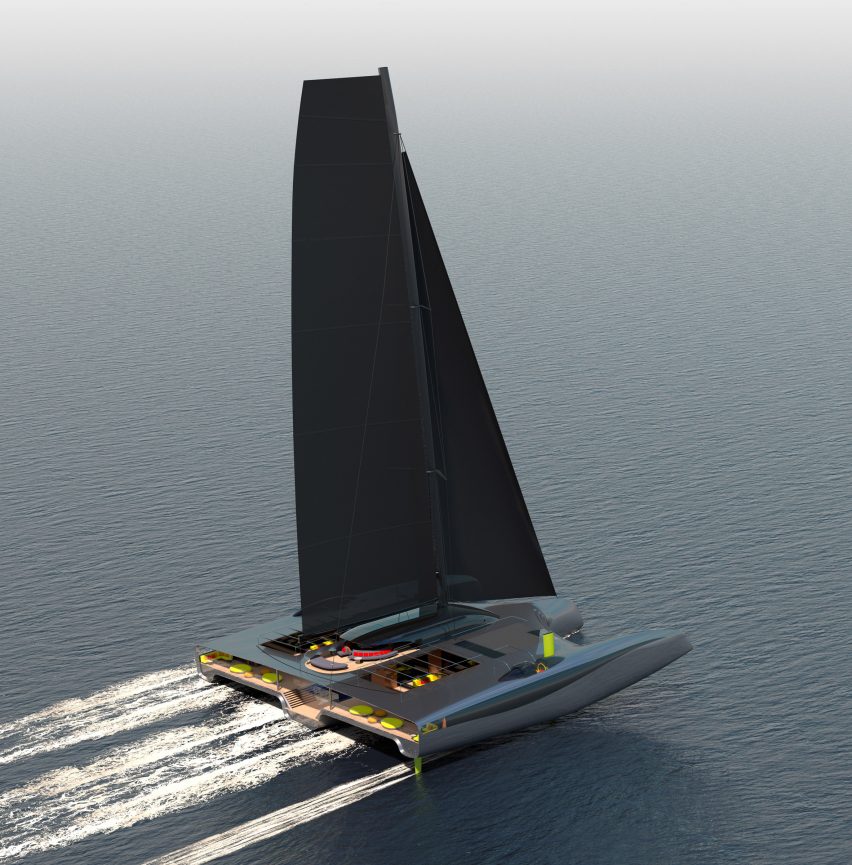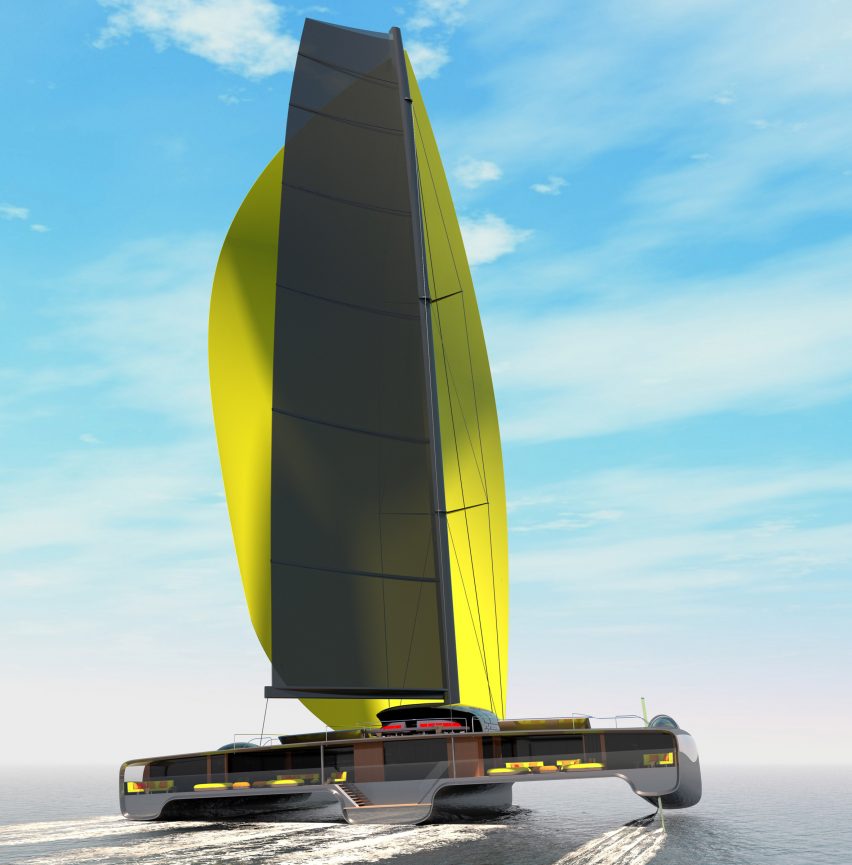
Domus trimaran designed as "world's first zero-emission superyacht"
Yacht design studios Van Geest Design and Rob Doyle Design have devised a trimaran concept that aims to be "the first truly zero-emission yacht over 750 gross tonnage".
The Domus megayacht would be powered by a combination of hydrogen fuel cells, hydro generation – the creation of energy through sailing – and solar energy.
The designers say this would give the yacht unlimited range, with a battery storage system to keep the vessel operational during the nighttime hours. The boat would be fully silent when at anchor, with no generator noise or exhaust fumes.

Van Geest Design (VGD) and Rob Doyle Design (RDD) devised the interior to have a "villa- or bungalow-like" onboard experience, with all of the living spaces arranged across one deck without steps.
Domus is a trimaran, which means it has three hulls instead of a catamaran's two. VGD and RDD designed the vessel to explore how much more efficient this class of boat is by comparison to a catamaran.
The boat would be just over 40 metres long but its interior area would span nearly 800 square metres – more than four times the interior area of most single-hull sailing yachts of the same length.

According to the studios, the trimaran is also easier to build and moves faster than equivalent-sized catamarans while offering more space and more comfort.
The reason it would be easier and cheaper to build is that all the systems and engineering are in the centre hull and would not have to be duplicated across two hulls as for a catamaran.
VGD and RDD describe the design as "basically designing a monohull with outriggers".
The studios say they doubled the interior space compared to 40-metre catamarans because the vessel's functions could be organised into a more efficient design.
"We believe that the current trend to design large superyacht catamarans is fundamentally wrong," said the two design studios.
"We strongly believe if you want the benefits of multihulls at 40-metre-plus size, the only practical solution is a trimaran."

All of Domus' services – such as the galley, laundry and crew mess – would be located in the central hull, while the outer hulls would be mainly used for storage, and the full length of the main deck above given over for the exclusive use of the owner and their guests.
The main deck would include two VIP and four guest cabins, two atriums covered by solar panelled louvres, a spa, a gym, a pool, beach platforms, a cinema and lounge areas.
Domus is named after a type of Ancient Roman house inhabited by the social elite, which was typically arranged around a central courtyard or atrium.

VGC and RDD said they reconsidered every aspect of yacht design to create the Domus concept.
"As the Domus idea was never thought of before, we had to isolate the key features and translate those into the design for maximum impact," founder Pieter van Geest told Dezeen.
"The yacht has the same amenities as a 60-metre motor yacht but the way the spaces interact are completely different."
Other recent innovations in yacht design have come from Waterstudio.NL, which created a solar-powered electric yacht with retractable stilts that allow it to be raised fully out of the water.